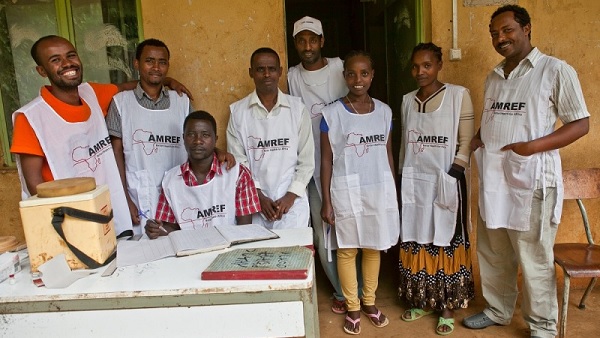
(PLOS Blogs)–History is replete with stories of warnings from eyewitnesses that went unheeded, and of the consequences that followed – sometimes good, often bad. All accounts are partial, but experiencing something with the naked eye and receptive ear remains an essential way for forming hypotheses, even if those hypotheses run counter to the assumptions that bounce around our echo chambers. Dr. Kenneth Maes has written a book about community health workers (CHWs) in Ethiopia that is unprecedented, and full of insights we can choose to heed or ignore. He gained his most critical insights from years of work on the ground, close to the problem, spending hours upon hours interviewing and reflecting with volunteer HIV caregivers. What he learned should not be surprising, and could inform global health policy, but it runs against the prevailing wisdom about CHWs. If history teaches, we still need to learn what it will take to not ignore Dr. Maes’ advice.
“What he learned should not be surprising, and could inform global health policy, but it runs against the prevailing wisdom about CHWs.”
The dominant narrative on CHWs goes like this: health systems need to be strengthened but capacity to do so is weak in “resource-limited settings.” This weakness is particularly apparent in the lack of adequate “human resources” because poor nations have neither the time nor the funds to build and maintain medical and nursing schools, and many of their graduates will wind up brain draining to rich nations anyway. A more “cost-effective tool” to address this challenge, then, is to “task shift” the work of nurses and doctors down the chain to humble lay-health workers. They are cheaper to train (less training), cheaper to maintain (receiving little, or no pay at all), and sufficiently effective (capable of showing measurable gains in some basic health indicators). If this narrative ever makes students of public health squirm when they first hear it, they will learn to swallow it whole as the bitter pill of reality. As has been said, “my poverty, but not my will, consents.”
“CHWs are not tools. They are people.”
Dr. Maes cuts right through this narrative with one inconvenient fact: CHWs are not tools. They are people. Framed as “tools for mortality reduction,” they become the pawns in the chess game of global public health: they are many, they are on the frontlines, their movement is limited by the rules of the game, and if times get tough they are the most expendable. By simply telling their stories, Dr. Maes takes the reader deep into the humanity behind these often faceless workers, such as Eskinder whose mother made shoes for leprosy patients, who used to swim in the river to hide from violent “defense” squads, who lost his fiancée after she infected him with HIV, who was near death with AIDS himself before antiretroviral medications miraculously became available, and who became one of a few male volunteer CHWs because he “saw peoples’ bodies prepared for burial” beside him as he lay waiting to die. Eskinder’s story is intertwined with epidemiological, political, and economic problems, and the benefit of hearing it told with such compassion and respect “drives home the complexity and dignity of CHWs’ lives.”
Read the complete story at PLOS Blogs
